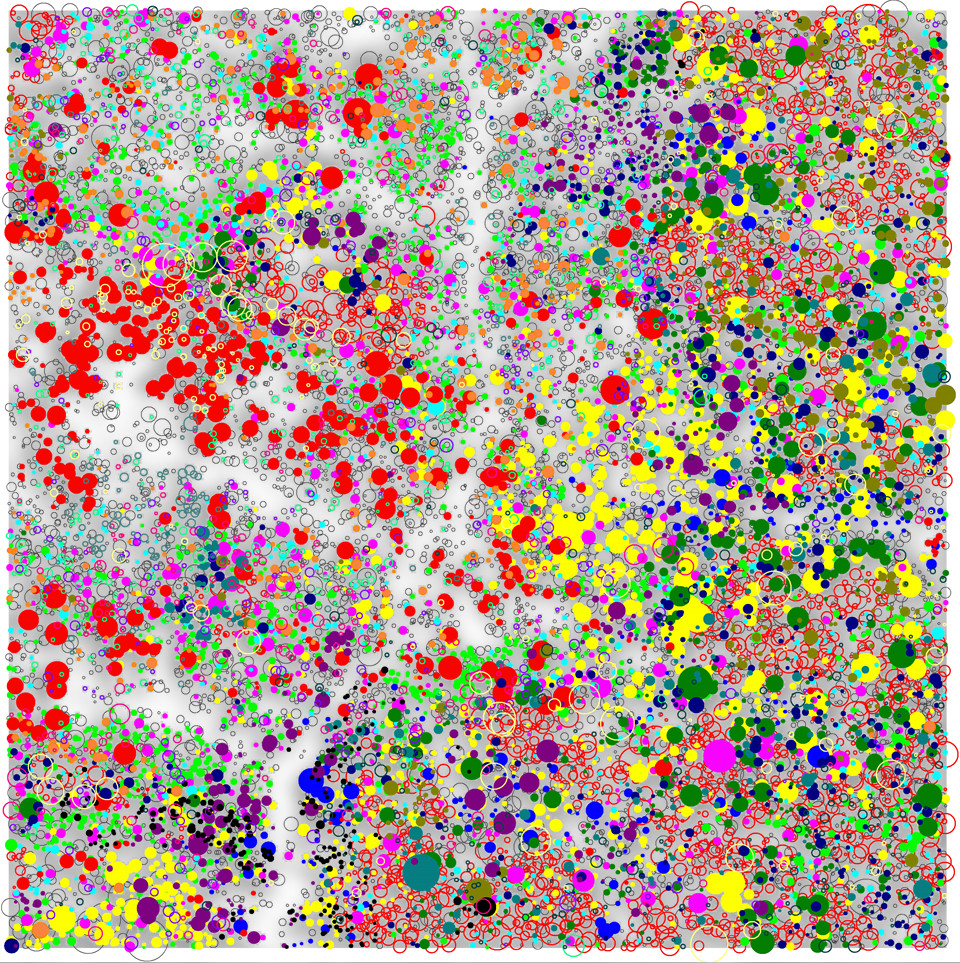Spacial Structures and Species Coexistence (ERC Project)

The overarching ecological objective of SpatioCoexistence is to develop a spatially-explicit theory for forest communities of intermediate to high tree species richness, as found for example in temperate, subtropical and tropical forests, to derive theoretical expectations about how multiple ecological pattern and processes interact in determining the dynamics and coexistence of species in empirical settings. We integrate state-of-the-art mathematical and simulation approaches with methods from physics and spatial analysis of the large spatial data sets, such as ForestGEO inventory data of 20-50 ha forest plots, each comprising the species identity, size and location of >100,000 trees. The link to the microscopic scale of individual plants allows us to integrate ecological detail in unprecedented ways, while keeping the theory tractable.
Selected Publications
- Wiegand, T., Wang, X., Fischer, S.M., Kraft, N.J.B., Bourg, N.A., Brockelman, W.Y., Cao, G., Cao, M., Chanthorn, W., Chu, C., Davies, S., Ediriweera, S., Gunatilleke, C.V.S., Gunatilleke, I.A.U.N., Hao, Z., Howe, R., Jiang, M., Jin, G., Kress, W.J., Li, B., Lian, J., Lin, L., Liu, F., Ma, K., McShea, W., Mi, X., Myers, J.A., Nathalang, A., Orwig, D.A., Shen, G., Su, S.-H., Sun, I.-F., Wang, X., Wolf, A., Yan, E., Ye, W., Zhu, Y., Huth, A. (2025):
Latitudinal scaling of aggregation with abundance and coexistence in forests
Nature 640 (8060), 967 - 973 10.1038/s41586-025-08604-z - Wiegand, T., Wang, X., Anderson-Teixeira, K.-J., Bourg, N.A., Cao, M., Ci, X., Davies, S.J., Hao, Z., Howe, R.W., Kress, W.J., Lian, J., Li, J., Lin, L., Lin, Y., Ma, K., McShea, W., Mi, X., Su, S.-H., Sun, I.-F., Wolf, A., Ye, W., Huth, A. (2021):
Consequences of spatial patterns for coexistence in species-rich plant communities
Nat. Ecol. Evol. 5 (7), 965 - 973 10.1038/s41559-021-01440-0
- Wiegand, T., Huth, A., Wang, X. (2021):
Behind the paper: Space can change what we think we know about coexistence
SpringerNature Research Communities
